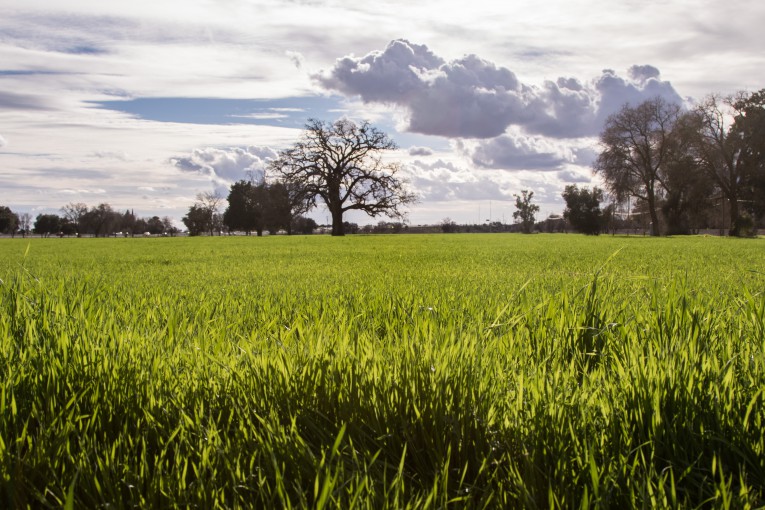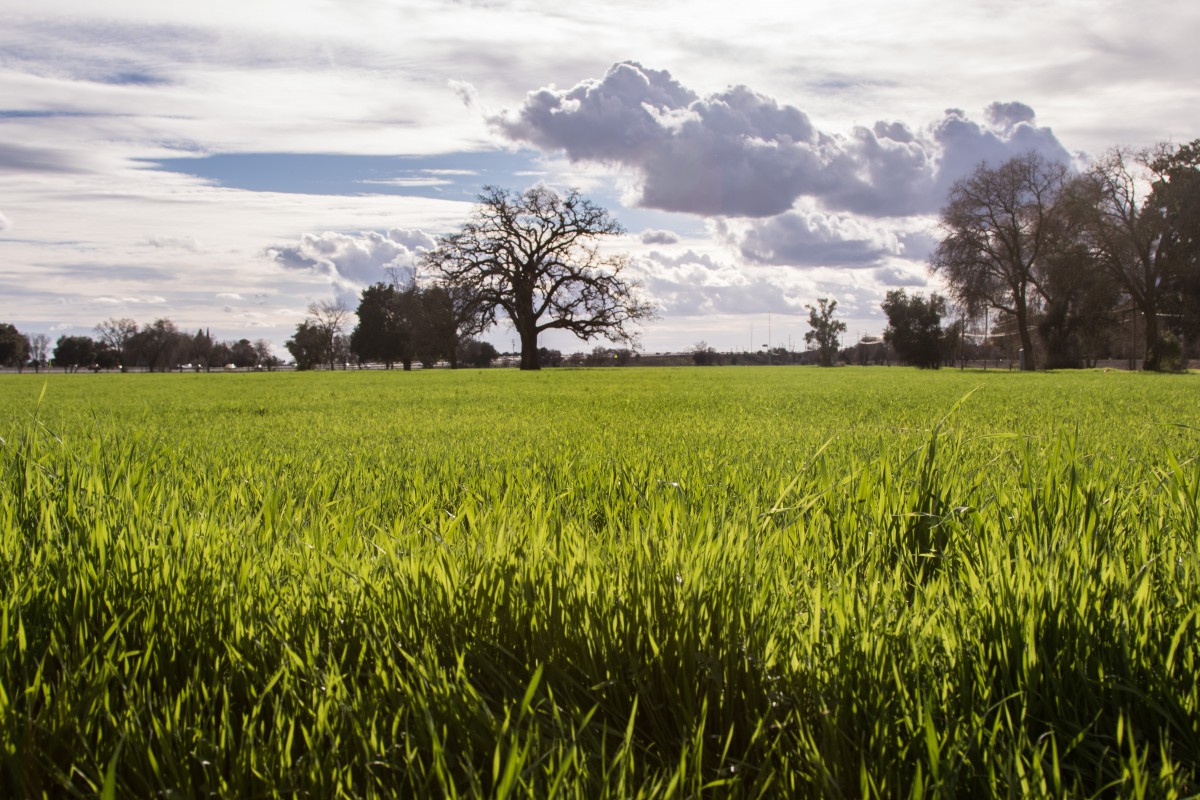

Given that we are probably less than a year from Measure R’s renewal being on the ballot, I’m a bit surprised that we haven’t seen more discussion on it. Then again, given that this year we have already had to deal with the tragic death of Natalie Corona, plus two hot issues – paid parking and now Mace Blvd – maybe that shouldn’t be so surprising.
Mayor Brett Lee therefore takes the first step – he stakes out not only a position but a method of evaluation – “what would have happened in the absence of Measure J/R?”
Along those terms, one area that Brett Lee did not wade into was the history of Davis that led to Measure R to begin with. Davis had drastically changed with the addition of a number of fairly large peripheral subdivisions – starting with the 1986 controversy over the county’s approval of Mace Ranch and continuing through Wildhorse a decade later, and ending with Covell Village, a decade after that.
What many may not remember now is that all three of those ended up on the ballot – Mace Ranch’s bizarre history ended with two issues being put on the ballot, both gaining more than 60 percent. Measure Q approved the development agreement and garnered 60.1 percent of the vote.
In 1995, Measure R was put on the ballot which would ratify the Wildhorse development agreement. Voters would support that.
By 2000, after two decades of relatively fast growth in the 1980s and 1990s, Davis voters narrowly voted 53-47 to put a brake on future growth with the passage of Measure J. Their first test was the 2005 Covell Village proposal and the voters, wary of the size and traffic impacts, voted down the project by a 60-40 margin.
One of the interesting points that comes out of Mike Fitch’s book on Davis, Growing Pains, is that by 1997, city officials started attempting to assure critics “that the pace of housing construction would slow down in following years, noting that Covell Center was the last big residential project envisioned in the General Plan before the year 2010, and there was talk about  removing it as part of the update process.”
removing it as part of the update process.”
In March 1998, then-Supervisor Dave Rosenberg who had been on the council when the 1987 General Plan was adopted, argued that the community was doing better at growth control than its critics realized.
He concluded: “The statistics confirm that Davis has controlled its growth through the 1987 General Plan and has avoided the 4 to 6 percent growth rates experienced by some of its surrounding neighbors.”
Nevertheless, in hindsight, it appears that the writing was on the wall that the community response in the late 1990s was to limit growth. They not only enacted Measure J but they elected a slow-growth council majority in the late 1990s and early 2000s.
So, without Measure J, we would have had Covell Village, right? While it’s true that Covell Village was approved by a 4-1 vote, it is also true, as we saw with Mace Ranch and Wildhorse, that the voters most likely would have acted to put the measure on the ballot – and, unlike the two previous measures, I think it’s more likely than not that the voters would not have approved Covell Village.
As such, I think if we look at history a few important things emerge.
First, the notion that Measure J stopped all development is probably unsupported by the historical record. We had a history of putting controversial project approvals on the ballot.
Second, there was a belief up until last year that the voters would not approve Measure J/R projects. I never bought that because it was easy to find approvals in 1988, 1995, and even in 2006 with Target. That suggested that voters would approve certain projects if they deemed them necessary.
Third, there are those who complain about the cost of development in Davis caused by the need to get voter approval, but that ignores what Measure J actually did, which is not put projects on the ballot. Projects were going on the ballot long before Measure J was enacted. What Measure J did was introduce certainty to a chaotic process and it also put in place rules by which projects come forward.
Mayor Brett Lee of course makes a different argument. He writes: “I personally believe that what was proposed to us for the Cannery Project would have been much better if it had had to go over the hurdle of a community-wide vote.”
As most are aware by now, I was no fan of Cannery and I think history has proven the critics of the project to be correct on a number of fronts. However, I am not convinced that the mayor is universally correct on this point.
While I think Cannery probably would have been better had it needed voter approval, I think, as someone who preferred Nishi 1.0 to Nishi 2.0, that in that particular case we ended up with a worse project because of Measure R.
Then again – we have no idea what would have been proposed if the developers simply needed council approval rather than community approval.
So for those who wonder why I still support Measure R – it comes down to this: Measure R creates a process-certainty that did not exist previously, it gives the voters the right to weigh in on projects and be the final decider as to whether they go forward, and history shows both in the pre-Measure J days and in 2018 that voters will support reasonable projects when they view housing as something we need to add.
The question that Mayor Lee does not address is, however, a big one: “As far as a ‘better’ Measure J/R? Better is in the eye of the beholder; the details will be all important in what the proponents of ‘better’ actually do propose for us to determine if it really is ‘better.’ Better for the community? Better for the developer? Better for the voter? Just what exactly is this ‘better’ that they are referring to?”
While I come down clearly on the side of continuing Measure R, I really do not understand why people are not even willing to entertain the idea of revising it. Frankly, I have seen proposals put forward by both sides of the proverbial divide that might help improve the process.
—David M. Greenwald reporting


What specific proposals have been put forward by both sides?
Change the language from “put forward” to floated since there hasn’t been anything formally put forward. Toward that end, Michael harrington has been talking to me for years about changes he wants to make to strengthen Measure R, I don’t know if he’ll go forward with it as a separate initiative at this point.
I can promise, unequivocally, I will vocally and financially oppose such a move by that individual… easy to say, as I strongly assert, he is ‘blowing smoke’ up your kilt. Yet, if he is “for reals” so am I.
Mike H, while CC member, perverted City Code, to promote an extortion by his friend/constituent to get City staff to require a developer “gift” land to his ‘bud’, in order for his vote to approve a subdivision in Willowbank… he failed… yes, j’accuse… he did it to me… have a witness… am ready to testify, under oath, if needed.
My opinion is he has no real scruples/morality (except perhaps, divisive, self aggrandizing ones)[reminds me of someone whose current address is 1600 Pennsylvania Avenue]… there are others who fit that description… in my opinion.
BTW, David, a correction… the primary vote on the Wildhorse DA was NOT done under the aegis of J/R… it was a qualified referendum by WHOA. Just ask Rodney R…
“BTW, David, a correction… the primary vote on the Wildhorse DA was NOT done under the aegis of J/R… it was a qualified referendum by WHOA. Just ask Rodney R…”
Correct, if you look at my chronology, Wildhorse (Measure R) was in 1995 and Measure J was passed in 2000.
Actually David, Mayor Lee took the second dive into the Measure R renewal discussion. Dave Taormino’s eight-page discussion distributed both by mail and electronically six weeks ago was the first dive. He entitled it “Davis’ Measure R Analysis and Retrospective — What 20 years has taught us”
Perhaps it is a good time for you to reprint that first dive in its entirety.
Is that discussion already publicly available somewhere? Googling around is not finding a copy.
This would work great, if voters as a whole weren’t so bloody stupid.
Well democracy is the worst form of government except for all the others.
True dat!
Of course, there is one better, MUCH better: democracy with priority choice voting.
Except we don’t have a real democracy because non-citizens can’t vote but they pay rent.
The Cannery would be better if there was a big gym there. Davis has really dumpy, small, and expensive gyms. A big one with lots of equipment and open long hours would be great.
You really like poking dead things with a stick, JH!
Sometimes they surprise you.
Did you mean that in a pejorative way?
“You really like poking dead things with a stick, JH!”
It seems Ron Glick is better at it than I am.